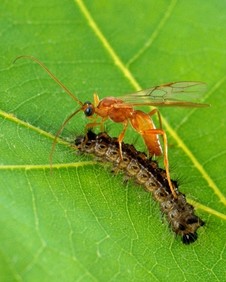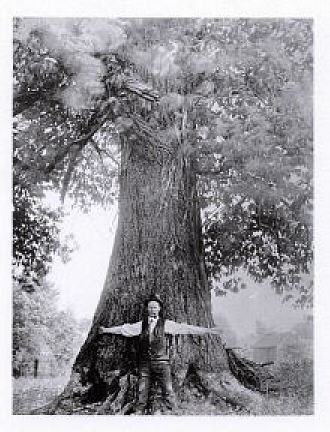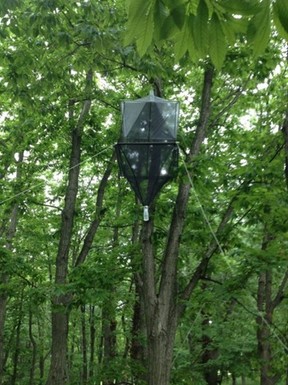The Taxonomist, the Conservationist, the Agriculturalist, and the Historian In 1949, the noted nephrologist Thomas Addis described the researcher as, “Part craftsman, part practical scientist, and part historian.” Although Addis did not have parasitoid wasps in mind, this passage perfectly describes the work of Dr. Robert Kula at the USDA ARS Systematic Entomology Laboratory. Kula uses traditional insect taxonomy to answer broad scale questions about biodiversity, community ecology, and biological control of pest species. He implements large scale biodiversity studies on four continents using specimens and files from the Smithsonian Institution National Museum of Natural History (NMNH), long term fieldwork around the US, and primary literature that ranges from antiquated manuscripts to freshly minted publications. Modern scientists try to be collaborative, globally engaged researchers in order to remain competitive for positions and funding, and Kula is all of these things as a truly multidisciplinary entomologist.  Figure 1. Aleiodes indiscretus wasp parasitizing a gypsy moth caterpillar. USDA photo by Scott Bauer. Image Number K7659-1 Figure 1. Aleiodes indiscretus wasp parasitizing a gypsy moth caterpillar. USDA photo by Scott Bauer. Image Number K7659-1 Kula’s research centers on Braconidae, a hymenopteran family of parasitoid wasps. There are 19,439 described species, with ~50,000 species anticipated worldwide. Braconids range in size from 1 mm to 3 cm in length and are character rich, meaning they demonstrate a wide variety in color, sculpture, and shape (Figure 1). Like their appearance, braconid behavior is also diverse. Collectively, braconids parasitize insects from 7 orders and can either live alone (solitary) or in groups (gregarious). Some braconids permanently halt th development of their host when they lay their eggs (idiobionts, “living apart”), and others allow hosts to develop with the parasitoid offspring (koinobionts, “living together”) (Brodeur & Boivin, 2004). This braconid hyperdiversity makes the family a prime subject for studies on environmental perturbation and landscape level changes. In 2001, Kula began a large-scale sampling of braconids at Konza Prairie in Kansas. Results from previous sampling had identified only 86 braconid species, which seemed too low for a family as species-rich as the braconids. To remedy this undersampling, from 2001-2006 Kula and his colleagues collected at sites that represented a variety of land management practices (grazing, no grazing, controlled burning, etc.) (Kula & Marsh, 2011). Kula and his research group have found that braconid diversity is reflective of management strategy, with most similarity occurring between sites managed in similar ways. Thus, adjacent sites managed very differently had different profiles of braconids. Based on these initial results, Kula estimates a whopping 234 braconid wasp species will ultimately be sampled at Konza Prairie, including many undescribed species. The results demonstrate the importance of considering how grassland management affects insects that provide services critical to ecosystem function, such as parasitoid wasps. Questions that must be addressed more frequently in conservation and restoration include the following: How do we maximize biodiversity in highly fragmented ecosystems? Can small parcels of land targeted for conservation or restoration provide sufficient resources to support organisms? To what extent do parasitic wasps such as braconids move from natural habitats into agricultural fields? Kula argues that such questions are best addressed through multidisciplinary collaboration conducted in conjunction with biodiversity research programs.  Figure 2: American chestnut pre-blight. Photo: masschestnut.org Figure 2: American chestnut pre-blight. Photo: masschestnut.org More recently, Dr. Kula has embarked on a new line of research that he referred to as one of the most enthralling of his career. It benefits the American chestnut (Castanea dentata), which was formerly one of the commonest and most economically important tree species in the eastern U.S. (Fig. 2). At the turn of the nineteenth century, a devastating fungal disease referred to as ‘chestnut blight’ was transmitted to these mighty giants from introduced Asian chestnuts trees. Sadly, by 1930, American chestnut trees were ecologically extinct (Hepting, 1974). However, since the late 1980s, researchers have actively pursued a backcross breeding program that confers the Chinese chestnut tree’s blight resistance to its American cousin, resulting in a hybrid that is 94% American and 6% Chinese (Herbard, 2006) With chestnut tree revival on the horizon, Dr. Kula and his collaborators began to ask several questions, including “how did the functional extinction of the American chestnut impact its community of associated insects”, and “do herbivores on hybrid chestnut experience enemy-free space (release of pressure from natural enemies) from parasitic wasps”. This led Kula and his collaborators to develop a project on American chestnut and its associated insect fauna both pre- and post-blight. Uncovering pre-blight fauna is done by consulting literature from that period, as well as historical insect records in the Hopkins Notes and Record System, maintained in the Department of Entomology at the NMNH. This extensive recording system used by the USDA from 1899 until the 1980s contains detailed notes about insects of U.S. forests, including herbivores on American chestnut and their natural enemies. A comprehensive literature review indicated that most reports of insects associated with endemic or exotic chestnut in the U.S. are from five species: two putatively extinct micromoths, gypsy moth, chestnut gall wasp, and small chestnut weevil. Other researchers have considered four moth species extinct due to loss of America chestnut from the forest canopy. Kula and his collaborators are assessing pre- and post-blight trophic associations to understand herbivore-natural enemy interactions in the context of chestnut restoration  Figure 3: Tree canopy trap. Photo credit: Robert Kula Figure 3: Tree canopy trap. Photo credit: Robert Kula The first step in assessing the impact of American chestnut loss and recovery on associated herbivores and natural enemies is determining the extent to which insects historically associated with American chestnut occur in its ancestral range. Dr. Kula and his group, consisting mostly of Smithsonian Institution interns, set up insect flight traps (Fig. 3) in the canopies of pure American chestnut, Chinese chestnut and northern red oak trees. Traps were placed in Chinese chestnut and red oak trees because they are in the same plant genus and family, respectively, and red oak co-occurred with American chestnut throughout its historical range. One of his most exciting finds so far is a parasitic wasp reported previously from one of the two micromoths presumed extinct. This finding opens up further avenues of research: are there still viable populations of the moth species, or was the wasp species able to shift hosts? Is the host range for the wasp broader than what was reported initially? Hand-collecting herbivores on American chestnut and related tree species will no doubt shed more light on herbivore-natural enemy interactions from contemporary and historical perspectives. Dr. Kula’s research nicely demonstrates how taxonomy and natural history collections can be used to simultaneously address an array of questions in different, yet interdependent, areas of biology. References: Addis, Thomas, Helmuth Bookplate: Sprinz, and c1948 1949. Glomerular Nephritis: Diagnosis and Treatment. New York: Macmillan, 1949. Brodeur, J., & Boivin, G. (2004). Functional ecology of immature parasitoids. Annual Reviews in Entomology, 49(1), 27-49. Hebard, Fred V. "The backcross breeding program of the American chestnut foundation." Journal of the American Chestnut Foundation 19 (2006): 55-77. Hepting, George H. "Death of the American chestnut." Journal of Forest History 18.3 (1974): 61-67. Kula, R. R., & Marsh, P. M. (2011). Doryctinae (Hymenoptera: Braconidae) of Konza Prairie excluding species of Heterospilus Haliday. Proceedings of the Entomological Society of Washington, 113(4), 451-491. About the authors:
Lisa Kuder is a PhD student in Dennis vanEngelsdorp’s lab. Broadly, her research focuses on pollinator habitat along highway rights-of-way. More specifically, she is looking at the effects of de-icing salt on the floral resources of roadside wildflowers and ramifications for foraging insects. Gussie Maccracken is a PhD student in Dr. Charlie Mitter’s Lab. Her research focuses on deep-time plant-insect associations. She is currently studying 75 million year old insect damaged leaves from western North America. Comments are closed.
|
Categories
All
Archives
March 2024
|
Department of Entomology
University of Maryland
4112 Plant Sciences Building
College Park, MD 20742-4454
USA
Telephone: 301.405.3911
Fax: 301.314.9290
University of Maryland
4112 Plant Sciences Building
College Park, MD 20742-4454
USA
Telephone: 301.405.3911
Fax: 301.314.9290

 RSS Feed
RSS Feed




